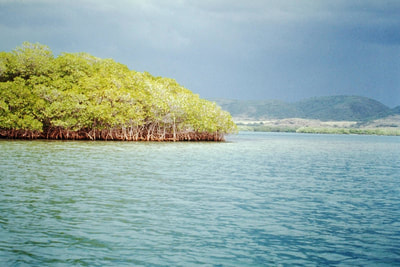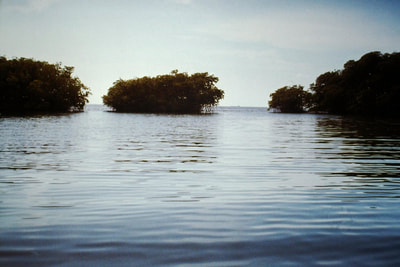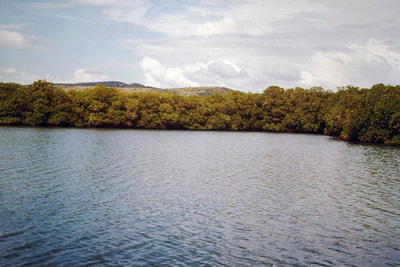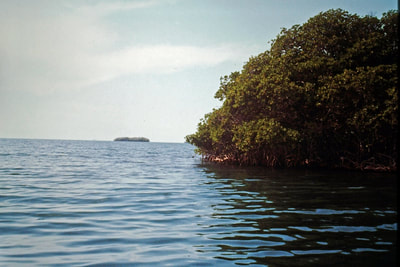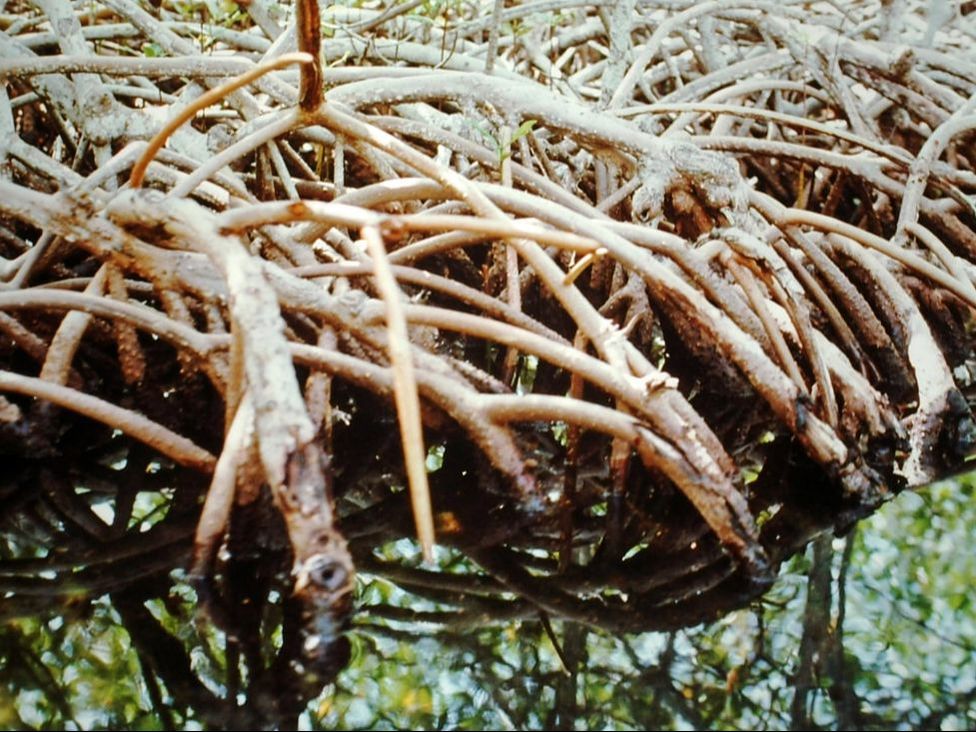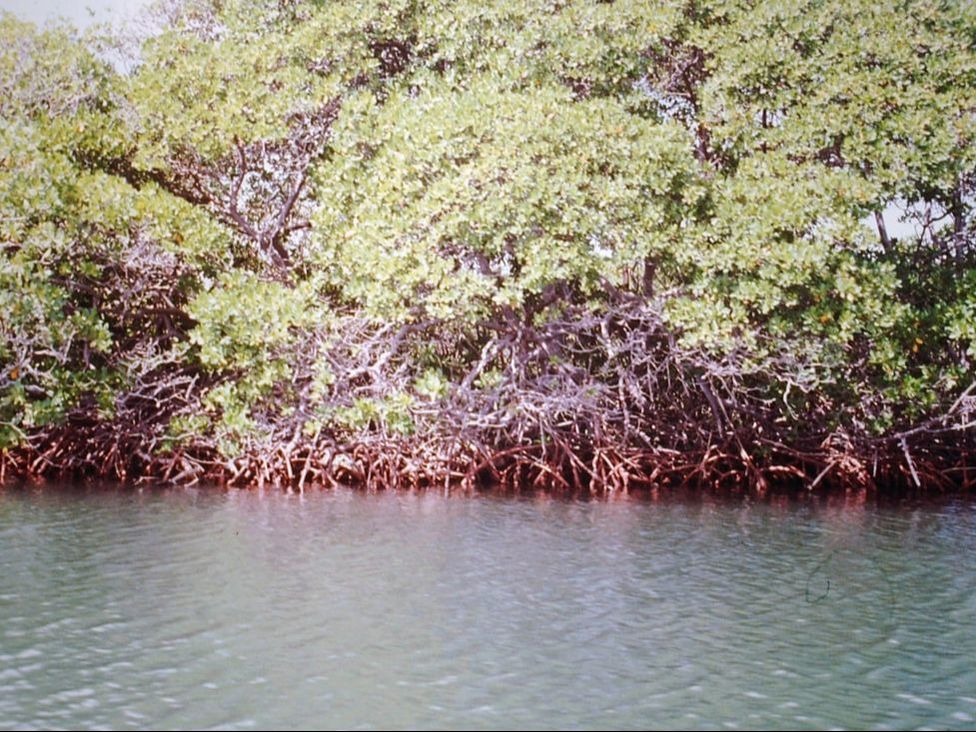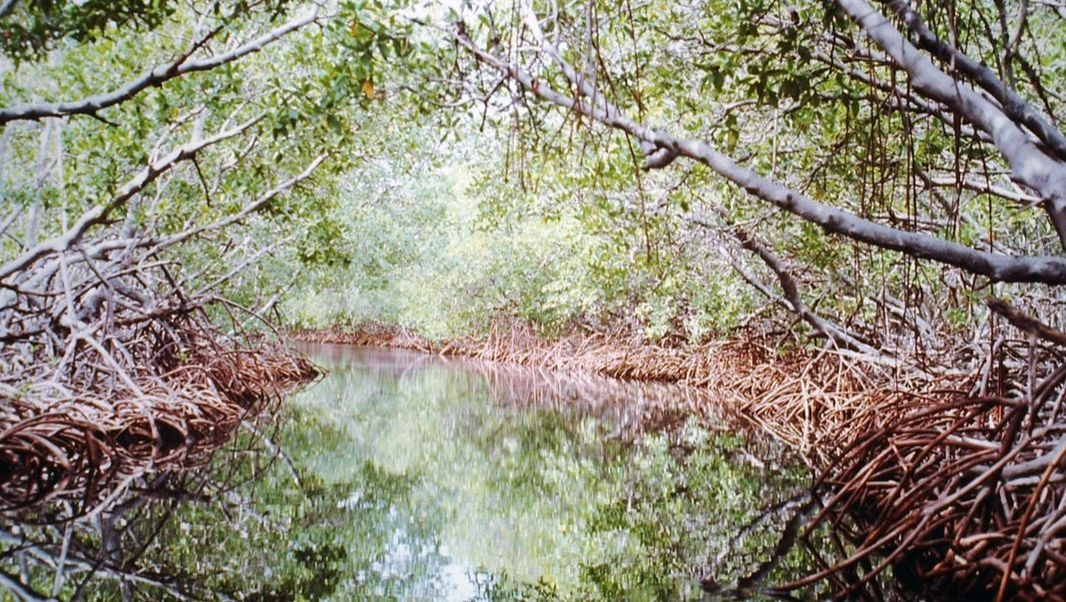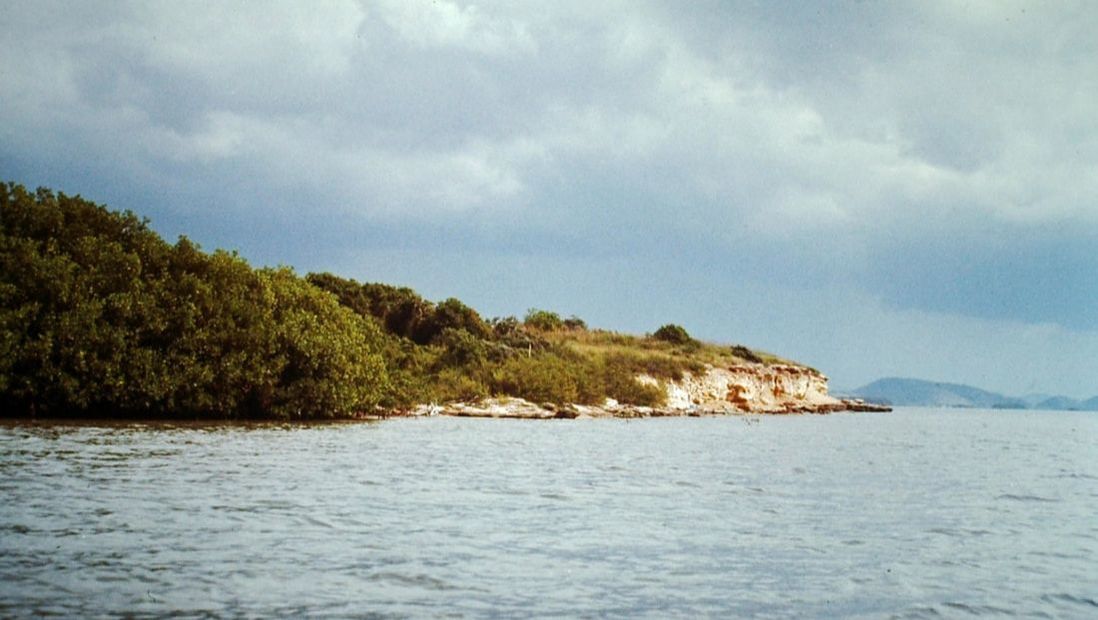Fringing a tropical coast are broad areas of woods and a group of small, wooded islands. Beneath the low tree canopy there is no proper land to be found. These mangrove trees trees live rooted directly into the mud and sand beneath shallow salt water. The raised network of roots spreading from bases of the mangrove trees gives a sort of woody ‘ground’ for dry-footed walking. The small mangrove islands, called cays (pronounced 'keys'), are outposts of the forest, seeded where the sea floor is very close to the water surface.
Dimensions The mangrove trees rise 20-30 feet (6-9 m), and the water depth around their roots is a foot (30 cm) or less. The open water within this bay is up to 15 feet (5 m) deep, with almost no tide action. Mangrove forest makes a fringe 50-200 yards/meters deep along the coast, and the offshore cays are 15-60 yards/meters in diameter.
Key Details
- Mangrove roots slow down movement of the seawater beneath the forest, encouraging water-borne sand and silt to settle. This also builds up the sea bed at the edge of the forest, so that the root network can reach further out and advance the forest front as the years pass.
- In this fairly dry climate, shallow water areas deeper in the forest have had enough evaporation that the still water is up to twice as salty as the ocean. Some small, bare water areas tucked between the thick mangrove fringe and solid ground are salt pans, where freshly-crystallized sea salt can be harvested.
- Snails and oysters, crabs and other creatures cling to the tree roots, above and below the water surface. Shrimp and small tropical fish shelter among the roots, as do the young of many large ocean fish. Visitors to the cay root mats include pelicans and yard/meter-long marine iguanas. Dolphins, manatees and turtles can be found in nearby water. Pelicans and swarms of mosquitoes are common.
- Water level is very stable here, rising and falling only an inch or two (a few cm) with the tide. The wave climate is usually very gentle, as well.
- The forest helps absorb the high waves and storm surge from hurricanes and tropical storms, and will do the same for tsunami, diminishing damage to communities on more solid ground inshore. The outer edge of the forest might be damaged in such events, ripped up in patches. Remnants of such scars, only partly filled in with new mangrove growth, can leave some scattered pools of open water within the woods.
- Narrow channels of open water run through areas of the shoreline mangrove forest and some of the largest cays. These are wide and deep enough for rowboats to navigate in comfort. The channels gently twist and branch, offering clear views tens of yards/meters ahead and behind.
- The coast beyond this shallow bay has sea cliffs with only small patches of rocky beach at their bases, offering difficult climbs to/from the water.
Story Elements
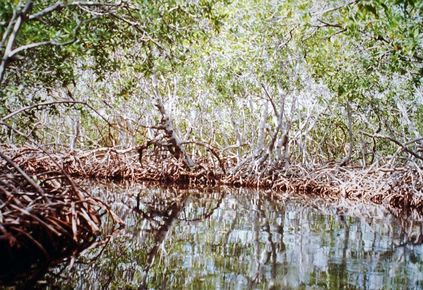
- The generally forbidding coast in this region will lead sailors into this bay, anchoring among the cays to explore channels through the forest by swimming or in small boats, on a perhaps fruitless search for fresh water or an easy route inland.
- Shore folk might visit the forest area to gather shellfish among the roots, or salt and brine from salt pans.
- Young of magical/fictional creatures might shelter in the mangrove system. Parents of those young in the mangrove forest might be especially interested in movements of the gatherers.
- People stepping carefully from root to root in the forest could become conscious of creatures creeping through branches above them, and also among dry root stems below them.
- Some small floating object lost on open water of the bay might drift below the mangroves and stay there among the roots for weeks or longer. Someone resting on the forest 'floor' might fortuitously spy the lost thing bobbing below, an arm's reach away.
- A boat crew fleeing rising tropical storm might make 'landfall' against the mangrove forest edge, and then need to scramble across the root network to get further inland, with threat of water from high waves rushing and splashing high above the normal floor level, lifting people off their feet and possibly knocking them against trunks and branches.
- A boat never recovered from beaching or tie-off against the forest edge could, over the following years, be trapped among newly growing roots of the advancing mangrove front, and eventually lost beneath the tree canopy.
- A cay might provide a temporary shelter for refugees migrating between islands, or it might be a relatively protected stop-off point for large groups of migrating birds or fish that aren't typical to the region.
- A strong unnatural light, sound, smell, or column of smoke might emit from an offshore cay, perceptible over long distance of open water, but with the specific cause obscured by the screen of mangrove trunks and branches, leaves and roots.
Reference Location
The Caribbean sea coast of Playa La Parguera, southwestern Puerto Rico.
© Rice-Snows 2018
Proudly powered by Weebly
